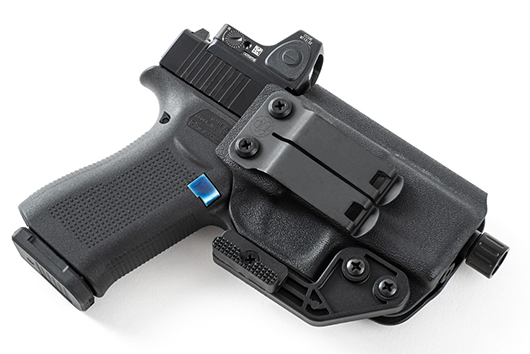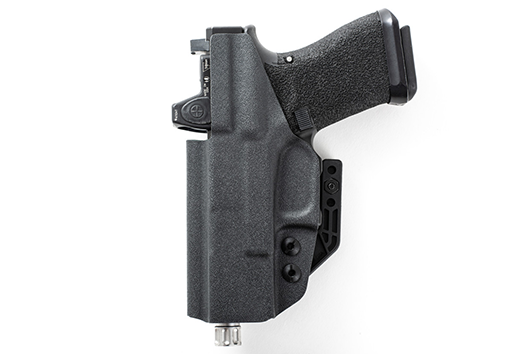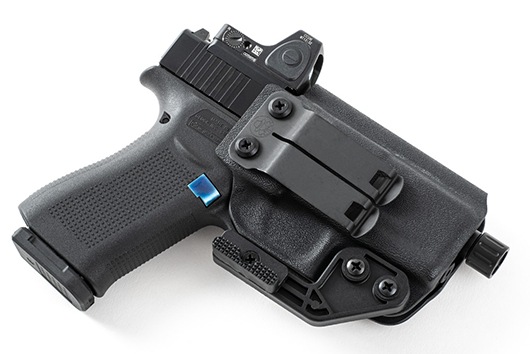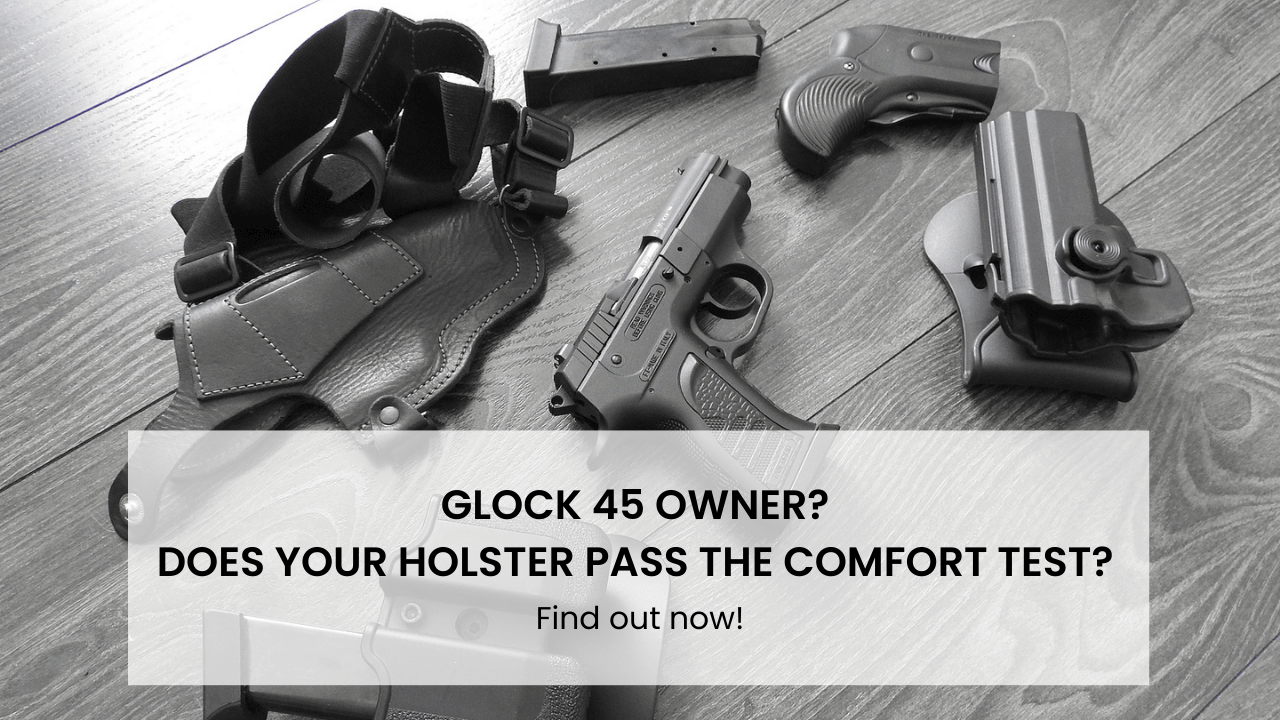How to Conceal Carry in the Summer
Mar 25th 2024

As the summer approaches, so does better weather and warmer temperatures. This means switching to lighter, more comfortable clothes for most of us. However, if you are familiar with concealed carry, you know that wearing fewer layers makes it harder to keep your firearm out of view.
Fortunately, all you need to continue carrying and exercising your Second Amendment rights is to follow the right principles and adjust your wardrobe and gear. Learn how to conceal carry in the summer and find the right combination of weapon, carry holster, and clothing.
Essential Principles of Concealed Carrying.
Concealed carry (CC) is the act of carrying a firearm in public without it being visible. The main challenge of concealed carry is ensuring you don’t give passers-by or strangers any signs or indicators that you are armed. A common “tell” is printing; when the outline of your holster or firearm is visible through your clothing, it prints from under the fabric.
Building the ideal concealed carry setup is about finding the right combination of clothing, gun holster, firearm, and accessories. The ideal CC weapon should be as powerful and comfortable to shoot as it is easy to hide. However, every advantage in one direction has a trade-off in the other. For example, a smaller gun is easier to hide but comes with a shorter barrel, lower capacity, or a less comfortable grip.
Why Summer Carry is Challenging
When carrying a concealed firearm, the more layers you wear, the easier it is to conceal a larger firearm. If you live in a region of the United States that experiences seasonal and wide temperature changes like Michigan, you may have experienced the differences firsthand.
Winter carry in the Detroit region is generally the easiest because it is normal and expected to wear many layers and heavier clothing. Summer carry is the hardest to pull off effectively, especially during a warm and humid Michigan summer. Typical summer attire is generally limited to a single layer of clothing with light, thin fabric; it is comfortable but the least suited for concealment.
Knowing how to conceal carry in the summer involves adapting your equipment to the temperatures and building a summer carry CC setup. Consider these tips, rules, and best practices for summer concealed carry, covering everything from appropriate clothing to choosing the right gun and holster.
Clothing and Wardrobe Selection
Concealed carry revolves around clothing and making the right wardrobe choices to blend in with the general population. While it can be tempting to add extra layers, especially if you prefer concealing a larger handgun, it isn’t always appropriate.
At best, wearing extra layers in the summer is uncomfortable and will leave you sweaty and miserable. At worst, it can attract unwanted attention. For example, if you are the only one not wearing summer-appropriate clothes in the area, you will stand out, defeating the point of concealed carry.
Instead of adding multiple layers, choose a single layer that keeps you comfortable in warm weather while providing concealment. To find the perfect blend of comfort and discretion, look for a shirt with these characteristics:
- Dark colors. A shirt in darker shades like black, brown, or navy blue is more effective at concealing underlying shapes. It helps obscure the outline of a concealed gun and holster, minimizing the chance of printing.
- Loose fit. A looser-fitting garment, such as an overshirt or a Hawaiian shirt, offers several benefits. It’s comfortable and allows easy movement in hot weather, making it ideal for summer. The flowing fabric drapes over your body rather than clinging, which helps to obscure the contours of items worn at the waistline, such as your gun and holster, reducing the likelihood of printing.
- Moisture-wicking clothes. Michigan summers are warm and humid, creating the perfect conditions for sweating. This can be uncomfortable and increase the likelihood of your concealed weapon being revealed through printing.
Cotton and linen shirts often absorb moisture, sticking to your body and accentuating the outline of your weapon. Instead, choose shirts made from moisture-wicking materials such as polyester, nylon, or Merino wool. These fabrics will help keep your body dry and conceal your firearm.
Holster and Firearm Adjustments
The right firearm for you is subjective; what you are the most comfortable shooting and carrying depends mainly on your preferences, training, and personal experience. However, summer carry introduces an extra hurdle for concealed carriers to overcome: size considerations. Your favorite CC gun might be too large or print too much in your summer clothes, even with wardrobe adjustments.
Adjusting an Existing Gun
An essential part of knowing how to conceal carry in the summer is adjusting or reconfiguring your existing holster for summer carry. To determine whether your existing gun and holster are suitable for the hotter months, try the following tests before switching to a different weapon:
- If you prefer OWB carry, check whether the barrel or the bottom segments of your holster stick out of the bottom of your shirt. If it does, consider wearing a shirt one size larger.
- If you carry IWB, ask a friend to observe you while standing, moving, or bending down. If they notice your firearm printing in certain situations, try adjusting your holster’s belt position and ride height.
- Does it feel like the grip prints more than the rest of the gun? Your firearm’s rotational angle might be the culprit. Consider adjusting your holster’s rotational angle to make it less noticeable.
- If your holster is compatible with it, try installing a mod wing. Its purpose is to apply pressure to the inside of your waistband, pushing the holster so your grip turns towards your body and reducing printing. Mod wings are especially suited to help solve concealment issues with an appendix rig, such as when your grip tilts too far forward.
Choosing a Different Gun
If none of these adjustments help, you may need to switch to a different weapon, especially if your existing carry gun is a full-sized or mid-sized pistol.
Consider carrying a smaller handgun in the compact, subcompact, or micro-compact category. If your primary gun’s manufacturer produces a more compact equivalent, you will already be familiar with the controls and overall feel, making switching easier. For instance, if your typical concealed carry gun is a Glock 19, consider switching to a smaller equivalent, such as the Glock 26 or the Glock 43.
You can also choose your new firearm based on the issues you discovered while testing your CC setup in summer clothes. For example, if you OWB carry and find that your firearm’s barrel protrudes past the hem of your shirt, you may opt for a shorter-barreled firearm. Consider choosing a gun of the same caliber and a similar grip size.
Picking a Holster for Summer Carry
Sometimes, the issue of printing and discomfort can stem from the holster, not the gun itself. Many holsters marketed as suitable for concealment don’t use effective materials or designs for this purpose. For optimal comfort and concealment during summer, a carry holster should include the following elements:
- Low-profile materials. While many modern concealment holsters use Kydex in their construction, Kydex sheeting varies in thickness from ultra-thin (0.060” or less) to hard-use (0.125” or thicker). While thicker Kydex sheets are more durable, they are primarily intended for duty holsters and open-carry applications. They are unnecessarily heavy for concealment holsters and tend to print noticeably.
Quality concealment holsters typically use 0.080” Kydex sheets, which offer a low profile for concealment and durability for everyday wear. All Incognito Concealment holsters for concealed carry use 0.080” sheeting.
- Sweat guard. Wearing an IWB holster lacking a sweat guard will expose your firearm to the salts in your sweat. Daily carry in these conditions will eventually ruin the finish or damage the protective coatings on your gun’s metal elements.
If you opt for an IWB belt holster this summer, verify it has a sweat guard. For instance, the Incognito Concealment T3 is designed with a full sweat shield on the side facing your body. It protects the entire length of your handgun’s slide, minimizing its exposure to sweat and keeping it in good condition.
- Contoured design. Kydex materials intended for holsters start life as flat sheets. However, our bodies have natural curves and shapes that make pressing a flat sheet uncomfortable and conspicuous. Quality concealment holsters are curved and contoured to fit the shape of the wearer’s body. They are more comfortable to wear, concealable, easier to draw and reholster and provide better retention.
A lack of contouring is a sign of a low-quality concealment holster. If your holster tends to dig into your side or generally feels too flat and squarish, consider switching to a higher-quality model. For example, the Incognito Concealment T3 IWB Holster, Venture OWB Holster, and Appendix Rig all feature curved sheets designed to fit flush with your hip or pelvic area.

Exercise Your Rights with Incognito Concealment
Knowing how to conceal carry in the summer is all about preparation and making the right choices of holster, gun, and cover garment. If you need help finding the ideal holster for summer carry, Incognito Concealment has the products you need.
Browse our IWB, OWB, and appendix holsters, which are compatible with hundreds of gun models from over 20 manufacturers. Contact us for questions, inquiries, or advice about our products and concealed carrying.











